
The folks at MartinLogan have a lot of nerve, mucking around with perfectly good clichés. Everyone else seems to understand that you get what you pay for. It's a truism that holds for everything from dining and haberdashery to haircuts and interns. But not, apparently, for speakers at least not anymore, at least not as far as MartinLogan is concerned. Their new Motion Series of loudspeakers flies in the face of traditional measurements of "value" and "performance."
But what do you expect from a company that isn't content to build speakers the traditional way to begin with? The MartinLogan brand is synonymous with highly lauded high-end hybrid electrostatic loudspeakers (ESL), which rely on thin translucent diaphragms sandwiched between perforated metal sheets to move air and generate midrange and high frequency sounds in lieu of stacked circular cones, and which unabashedly fall into "Getting What You Pay For" Territory, with sticker prices running upwards of $30,000 per pair at the very high end. Even an "entry-level" set of MartinLogan ESLs will set you back over $2K, and that's just for two!
But despite all of their advantages (incredibly dynamic sound, astoundingly low distortion, startling transparency) electrostatics aren't for every room in every home. They're large and pricey, not to mention power hungry and rather fussy when it comes to placement.
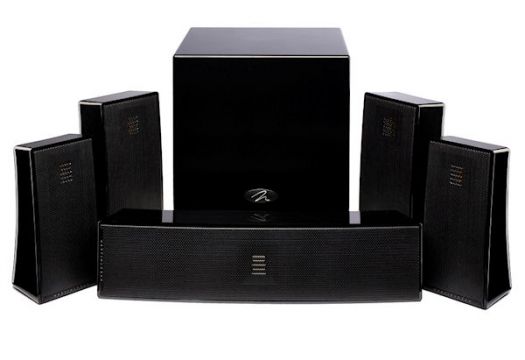
For one okay -- I just kind of spoiled it, didn't I? -- they're quite compact. The Motion 262 System includes four Motion 2s as the front left and right and surround channels plus one Motion 6 center channel speaker. The Motion 2 measures in at just 11.3 x 5.3 x 4.5 inches. The smaller of the two center channels in the line, the Motion 6, is a mere 5.25 x 17.5 x 3.75 inches and looks positively petite beneath the 40-inch LCD hanging on the wall above it. And if you're pulling out your measuring tape or holding your hands apart and thinking Those don't seem too terribly tiny, that's only because you haven't heard them. These things simply have no right to sound as big as they do. When the ratio of sonic size vs. form factor is taken into consideration, they seem positively Lilliputian.
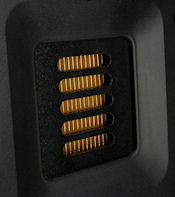
And then there's the fact that these beautiful little speakers illicit whatever the exact opposite of sticker shock is. At $199.95 for the Motion 2, $299.95 for the Motion 6 center channel, and $695 for the Dynamo 700 10-inch wireless subwoofer that MartinLogan sends to complete the system, you're looking at a less than $1800 for a complete 5.1 MartinLogan audio system, plus $120 for the optional wireless subwoofer transmitter (or less than $1600 if you opt for the non-wireless Dynamo 500 sub instead).
Quite frankly, after spending some quality time listening to the system, I'm almost inclined to think they're entirely too inexpensive.
It Puts the Motion in Its System...
Before we dig too deep into the performance of the system, though, let's focus on aesthetics and hookup for a bit, because once I start yammering about sound quality I'm liable to forget about anything else. Each speaker comes boxed separately, well packed in styrofoam and wrapped in a cloth bag. Also included with each speaker is an assortment of mounting hardware, a mounting template, and a microfiber cleaning cloth, the latter being a nice inclusion given that the beautiful glossy finish doesn't seem to even need to be touched to attract fingerprints.
Around back, each Motion Series speaker sports a proprietary push-style speaker cable connection that I was a bit skeptical about until I actually used it. Why mess with the standard high-quality five-way binding post? Or MartinLogan's trademark toolless binding posts, for that matter? But these simple connections keep the speaker cable close to the speaker, making wall mounting a breeze. And if you want to use banana plugs (which I do in the front of the room, since the speakers up there will be shelf-mounted and I already have three cables cut to length and terminated), all you have to do is remove a little rubber plug.
At the rear of the room, though, I simply and easily slide 14-gauge speaker cable into each connection and mount the speakers in no-time flat.
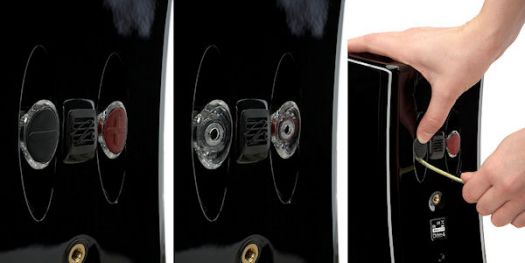
This is where I should probably admit that my surround-speaker placement is less than ideal: more than three feet above my ears and pretty much perpendicular to my head, rather than slightly behind. Honestly, my intention was to pull the surrounds down from their mounts and perch them in a more favorable position whilst working on the review during the day, and hang them back up near the ceiling before the missus got home so as to, you know, stay married and stuff.
That ends up being entirely unnecessary in the end. After running the Audyssey setup routing on the Denon AVR-2807 receiver in the bedroom, I pop in Avatar and find myself a bit blown away by how well the system handles the big action scenes. These speakers crank out every bullet whiz, every whooshing air beast, every Pandora-shattering kaboom and ask for another.
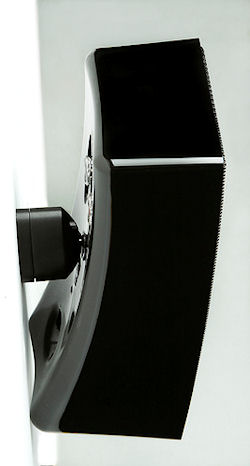
A bit tired of turning to the same dialogue clarity test as of late (the scenes at Caradhras Pass and in the Mines of Moria in Lord of the Rings: Fellowship of the Ring), I turn instead to another vocally challenging flick, V for Vendetta, and again find myself pleasantly surprised, this time by the Motion 6's ability to suss out Hugo Weaving's lines from behind that unmoving Guy Fawkes mask. And again, it handles all of the slashing and shooting and body-slamming in chapter 30, "V's Turn," with more than enough volume. If anything, they sound better the louder I play them, and truth be told they run me out of my rather mid-sized (12-by-15-foot) bedroom long before I hear any significant distortion.
Play That Funky Music, Wookiee Boy
Turning my attention to tunes, I pop in Chesky Records' Top 10 CD (and not just because my name is in the liner notes, mind you; it's full of amazing test tracks), disconnect the sub, and switch to stereo mode to see how well the Motion 2s would work as a two-channel bookshelf system. That doesn't last long, though. Try as they might, these little fellas really do need a sub. So it's fortunate that they blend as well with the Dynamo 700 as they do. A bit of placement tweaking (made all the more easy thanks to MartinLogan's ridiculously easy wireless setup) and a bit of experimentation with the sub's phase switch is all it takes to dial in some amazingly smooth response on the Avia Guide to Home Theater DVD's frequency sweep tests, all the way down to the nether regions of the audible spectrum.
With the sub back in the mix and Chesky's Top 10 back in the tray, I cue up Sara K's cover of Fleetwood Mac's "Oh Well" and fall into fits of giddy handclapping over the way the percussion springs out of the front soundstage, the way the notes of the upright bass dance seamlessly between the Dynamo 700 and Motion 2s, the way the guitar sounds like... well, a guitar. And in Pro Logic II music mode, the three-dimensional verisimilitude of Chesky's recording techniques is even more apparent thanks to the way these speakers reach out into the room.
I'll be honest, though, in PLII mode, with music, I can't help but notice that Sara's vocals are a bit chestier, and the Motion 6 overall sounds a bit darker, slightly midrangier than the Motion 2. A quick check of Avia's "Pink Noise Match of Center Speaker" confirms my hunch: there's definitely a noticeable timbre mismatch between the two. So just for giggles I grab one of the Motion 2s from the back of the room and pop it in place of the Motion 6, and find that I really prefer it as a center channel, at least for music.
With all of the speakers back where they belong, though, I turn my attention to the DVD-Audio release of Porcupine Tree's Deadwing and simply cannot get over the beautiful imaging. The Tesla-coil-esque audio effects at the beginning of "Arriving Somewhere But Not Here" flow like liquid between the left front and rear channels without a hint of jumpiness.
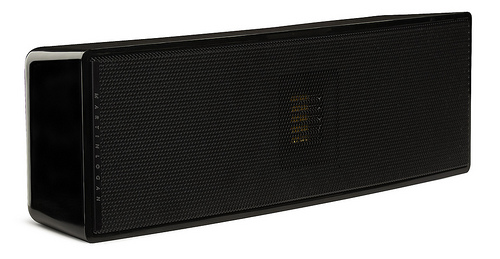
I absolutely cannot wait to audition the rest of the line.
Turn Ons
Turn Offs
Final Thoughts
MartinLogan's Motion 2 and Motion 6 loudspeakers are gorgeous little overachievers (seriously, pictures do not do them justice) that you absolutely must audition if you're in the market for speakers in this price range. Heck, you should really audition them if you're in the market for speakers costing two or three times as much. Do they compete with MartinLogan's more expensive hybrid electrostatics? No, not really. But it wouldn't be fair to expect as much.
Do they offer the same approach to sonic purity and inventive loudspeaker construction on a vastly reduced budget? Absolutely. This is what hi-fi on the cheap should sound like.
System Specs (as reviewed):
Motion 2 (x4, front left/right and surround left/right)
Motion 6 (x1 - center channel)
Dynamo 700 (x1)
Manufacturer's Contact Information:
MartinLogan
2101 Delaware St.
Lawrence, KS 66046
U.S.A.
phone: (785) 749-0133
On the Web: www.martinlogan.com
| Overall | |
|---|---|
| Value | |
| Performance | |
| Features/Ergonomics |